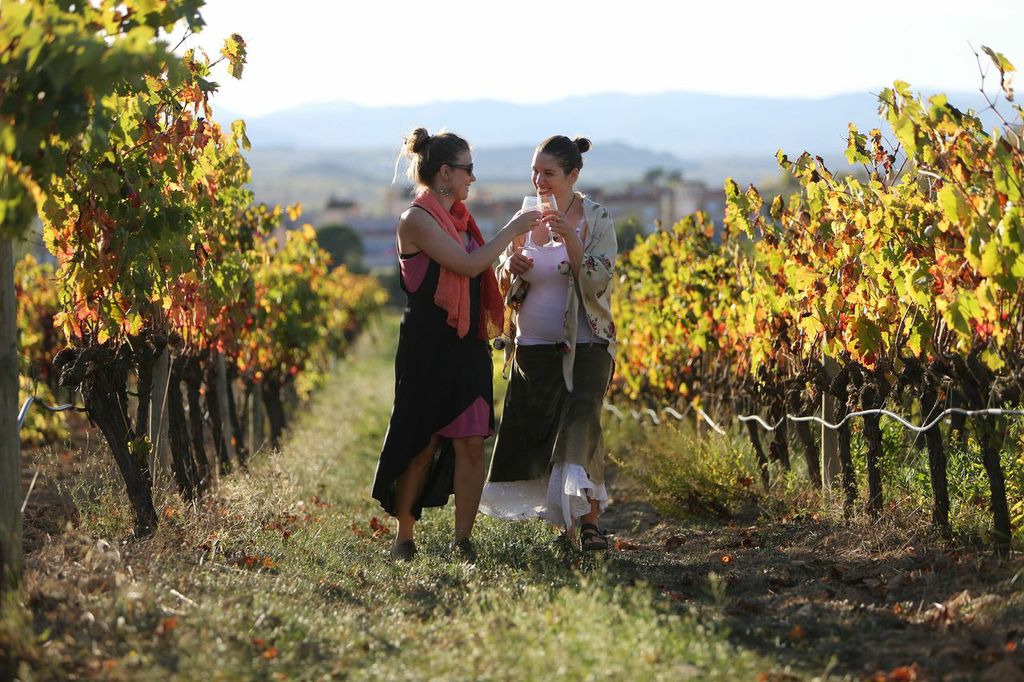
The Travel Industry Still Isn’t Getting It. Ignoring Queer Women Travelers Is A Missed Opportunity That Could Equal Lost Revenue.
by Heather Cassell
Despite growing depictions of women traveling in Expedia ads and hawking travel in Priceline ads, the message the travel industry continues to send to travelers is still largely male, straight, and/or white.
For LGBTQI travelers, simply add gay into the recipe and mix.
It’s all there in the glossy ads, the brochures, the Pride Parades, and at the welcome desk at LGBTQI-friendly resorts. Men. Ken-dollesque gay white monied men with their perfectly sculpted gym bodies. Yes, they look good, but that’s what many queer travelers only see.
The big question is, “Where are all of the other queer travelers?” especially, queer women. It’s the big question Girls That Roam askes at every destination, “Where are the girls?”
At each destination GTR’s team meets one amazing gay guy who knows where all the women are and he escorts a group of us travel writers to where they are … if we haven’t figured it out ourselves.
Recently, GTR sat down with Dawn Christensen, executive director of national diversity relations at MGM Resorts International and Rachael Brister, the LGBT strategist and public relations account manager at Greenrubino, to discuss their theories about why women, particularly lesbians, get ignored by the travel industry.
The two women, along with Lu Xun, director of quantitative research at Community Marketing and Insights, who crunched the numbers for the 22nd annual LGBT Tourism and Hospitality Survey, spoke on a panel, “Reaching Lesbian and Bisexual Women Travelers,” at the 18th annual CMI LGBTQ Tourism Forum in November 2017.
The women talked about the lack of attention through marketing campaigns and interaction by the travel industry with queer women travelers and presented a strong case for why travel industry leaders should pay attention to women travelers – queer, straight, and transgender.
Speaking with GTR, Dawn and Rachael dove more in-depth into their case for why travel and hospitality industry leaders should pay attention to women travelers.
Lost Money
Rachael and Dawn agreed that when it comes to diversifying the marketing field it comes down to who is making the decisions.
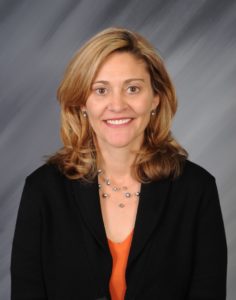
“It comes down to the people that make the decisions about marketing and about whom to target within the LGBT community,” said Rachael, a 42-year old lesbian who is a 20-year marketing veteran specializing in the LGBTQI community. “I think a lot of the people who [are] making the decisions are men, so, they are not necessarily thinking about the lesbian traveler or the lesbian travel market.”
It’s true. While there are well-meaning mean in the travel industry who love us women — queer, straight, and trans — during the nine years I’ve been traveling and writing, I’ve only been on two all-queer women press trips and they were organized by … drum roll, please … women. Thank you, Palm Springs and Vienna.
Dawn, a 46-year-old lesbian, who is passionate about promoting women’s and lesbian travel at MGM in Las Vegas, added, “For a long time, a lot of the marketing has been geared towards men.”
Focusing on gay men, usually mostly white gay men, has been the business strategy for many tourism industry leaders, she noted, but from her perspective inclusion is always a better business strategy.
“Nothing against men, but it’s a matter of inclusion. Inclusion is always a bit better business strategy,” said Dawn. “To overlook one market that also has the ability to generate dollars through loyalty … is a missed opportunity.”

(Photo: Courtesy of Rachael Brister)
“As a lesbian, when you look at advertising and campaigns that are geared towards the LGBTQ market … it is frustrating when you don’t see yourself,” she added personally.
Based on hard data, Dawn believes companies that don’t consider marketing to women or more so “inclusivity marketing,” which reaches out to targeted populations, such as, LGBTQI, women, people of color, and more miss out on brand loyalty opportunities.
“Leaving out a population of people who are spending money you’re leaving behind dollars it could take advantage of simply by being more inclusive,” said Dawn.
When GTR asked Rachael about travel marketers ever hearing about “power lesbians” she said they have, but they haven’t connected it with travel. It’s not as prevalent as the attractive “dual income, no kids” that many gay men sport.
“It’s definitely not as prevalent as people understanding or the stereotype of the ‘double income, no kids’ couple. I think that’s much more prevalent than the ‘power lesbians,’” said Rachael. “I think travel and ‘power lesbians’ don’t necessarily go together” in their minds.
“There’s so many things that women get the short shrift and travels definitely most definitely one of them,” she added.
History Doesn’t Lie
Taking the success of marketing to the LGBTQI travel market as an example, Dawn noted, “Companies that were really on the forefront of advertising for LGBT people and saying, ‘We welcome you,’ the LGBT community became very loyal to those brands into this day.”
Even for companies that were early accepters of the LGBTQI community and travelers, as the LGBTQI community becomes more accepted in Western society marketing becomes more focused on the type of LGBQI traveler they are reaching out to. Companies are now finding that they might need to ask themselves, which segment of the community does their brand service the best? Are these travelers queer women? Are these travelers queer people of color? Are these travelers interracial couples and families? Are these travelers queer grandparents traveling with their grandchildren or entire family? What are these travelers’ interests, sports, food, entertainment, and more? Are these travelers … “fill in the blank”? And are these industry professionals reaching out to these communities and subcommunities authentically?
“The LGBTQ community is made up of many segments in that community. There’s not just one visual representation of that community,” said Dawn about what companies should think about when they are courting a “very loyal audience.”
Companies that target only one segment, gay men, in particular, “leaves the impression that maybe a gay man is just a favored customer over a lesbian,” she continued.
Dawn believes that if companies look at “embracing all the letters of the LGBTQ community and have that reflective advertising showing [a] welcoming and inclusive environment sends [a message] to all the segments, ‘We welcome your business,’” she said.
In particular, “doing some outreach to women, I think will create bigger dividends than the initial investment,” she noted.
Leading By Example
MGM is demonstrating investing in the LGBTQI community and women through sponsoring a number of events, such as, MGM Resorts Foundation hosts an annual Women’s Leadership Conference, the resort was a major sponsor of women focused events during Las Vegas Pride as well as the entire event.
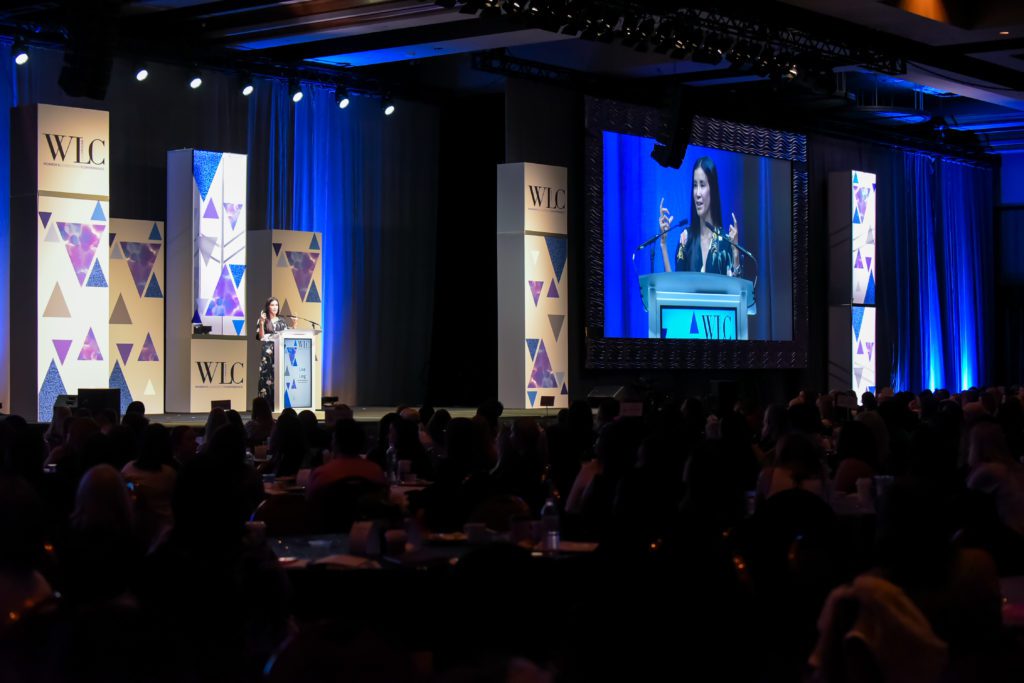
(Photo: Courtesy of MGM Resorts International)
“That was an opportunity to not only show our commitment to the LGBT community but to also show our commitment to women, in particular, which is a very important market overall for the company,” said Dawn, noting that the resort was the only one that sponsored any women’s event during the city’s annual Pride event.
“We do have a strong commitment to women,” she said about how MGM is “trying to be more inclusive recognizing that the LGBT community is very diverse and there’s lots of different types of people within the community.”
In December 2017, the resort purchased the Women’s National Basketball Association’s San Antonio Stars, renaming the team to the Las Vegas Aces. The players are currently warming up for the season that starts May 18 sinking baskets overseas.
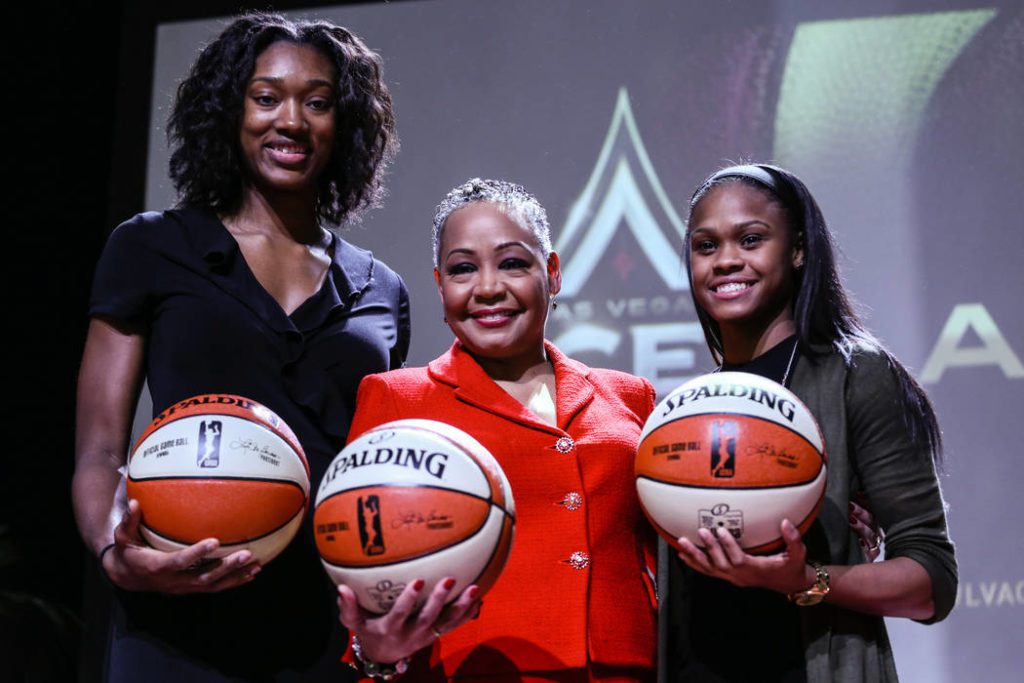
(Photo: Courtesy of Joel Angel Juarez @jajuarezphoto / Las Vegas Review-Journal)
“There’s definitely opportunities like that where you can reach consumers and start to build a loyal customer base that recognizes the brand authentically to an audience,” said Dawn, excited about the addition of the WNBA as another signal of MGM’s commitment to and welcome the sport’s largely lesbian and woman of color fanbase to the resort and Las Vegas.
When more companies “embrace women” and “recognize the buying power of women” and show that in their actions through advertising, sponsorships, and other avenues they are recognizing women as a market and as a “respected consumer,” she said, “That’s good for all women.”
“That’s good for the community and the business environment as a whole,” she continued, pointed out especially as women’s wealth and spending power continue to grow.
Girl Cash
Sure. Women – queer and straight – are seeing ourselves reflected in more ads on television, online, and in glossy magazines depicting women conquering mountains, daydreaming while peering out at foreign terrain from a train window, or purchasing a room at our dream hotel. However, the imagery still isn’t enough, and it isn’t translating into real life for a majority of travel and hospitality companies.
Women’s money is just as green as men’s money.
It’s true. Currently, the reality is that women are still paid less than men. According to the U.S. Census in 2017, women on average earn 80 cents to every dollar made by a man, the panelists pointed out.
Translated into gay couples versus queer women couples, women earn 40 cents less than a gay male couple. Those figures become even more devastating when it comes to women of color: Black women (63 cents) and Latinas (54 cents). Asian women appear to be doing slightly better overall earning 85 cents to every dollar made by a man.
However, there is an alternate reality and a major shift happening for women’s economic health and financial security allowing women the luxury to travel.
“I think there needs to be a lot more attention paid to the fact that women make the majority of the travel decisions, whether it’s a couple, family, or a household,” said Rachael.
Many studies within the past decade have shown that women – whether it’s their own hard-earned dollars or someone else’s money – make most of the purchasing decisions.
Queer women definitely are making purchasing decisions as an all-woman headed household.
During the panel discussion about lesbian travel at CMI, the panelists noted studies from leading research institutions, citing that women drive 70 to 80 percent of consumer purchasing decisions and control $15 trillion in spending power. Over the next decade, women are anticipated to control $12 to $40 trillion, according to the Harvard Business Review.
Currently, women are the primary breadwinner in 40 percent of American households and control 51 percent of the wealth, according to the BMO Wealth Institute.
Women over the age of 50 are the healthiest, wealthiest, and most active generation of women in history and they have a net worth of $19 trillion, according to Forbes and the Pew Research Center.
What does that mean to the travel industry?
Today, nearly two-thirds of travelers are women with the average adventure traveler being a 47-year-old female who wears a size 12 dress, according to the experts.
Yet, as Rachael points out, “It’s rare to see an image of a female traveler, solo female traveler, which is a huge and untapped market whether that woman is heterosexual, queer, or whatever,” she said.
GTR doesn’t foresee women – queer or straight – slowing down anytime soon. The only thing that has changed, since our previous articles about how the travel industry overlooks queer women travelers as a definite market to be tapped into are that queer women travelers are crossing borders solo, coupled, and with groups of friends in larger numbers.
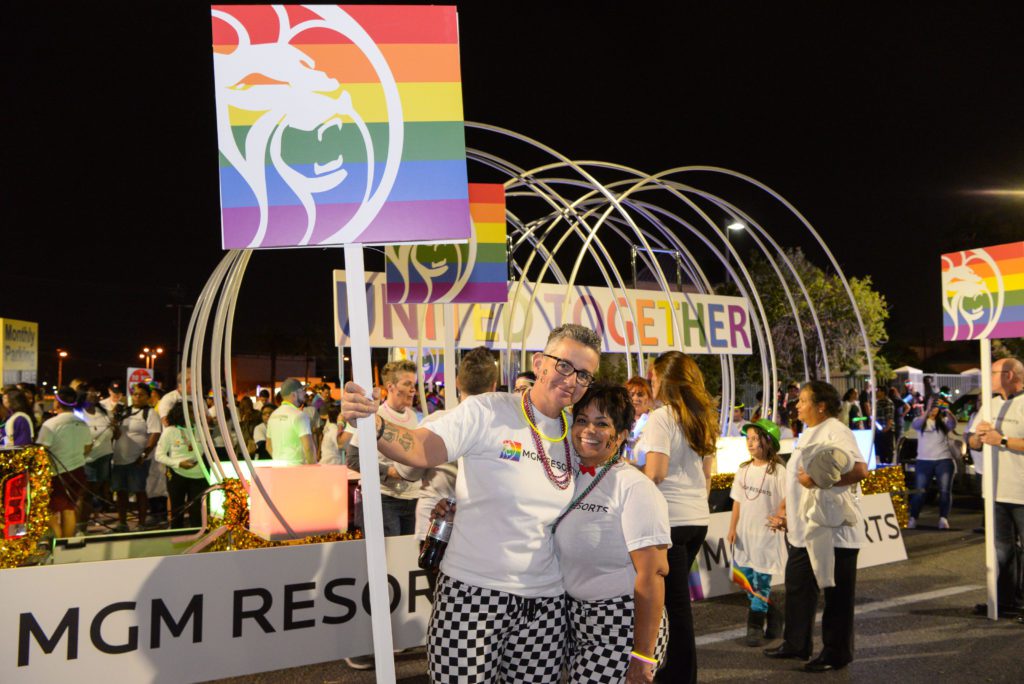
“When I travel, I do invest a good amount of money into my trips and my activities during the trip. So, when you see a business that doesn’t recognize that women do invest a good number dollars into their travels … it leaves you feeling like they don’t appreciate your business,” said Dawn.
“If you see yourself represented in advertisement then you can picture yourself vacationing there. This seems to be a common-sense business decision,” she added.
Yet, Dawn couldn’t state why a majority of tourism and hospitality leaders continuously overlooked women, no matter what their sexual orientation, ethnicity, marital or family status, or economic situation.
Rachael, who lives in Seattle, Washington and travels mostly for work, recently went on a two-week vacation with her fiancée to France. The couple had a wonderful time traveling to Paris, Lille, Lyon, Provence, and Marseille and took tons of photos, she said. They returned from their trip like many other couples with happy memories because no one batted an eye that they were together as a couple.
Experiences and memories are what the travel industry is about, queer women are traveling, why isn’t the travel industry paying attention?

Rachael was somewhat hopeful that change is on the horizon, but that it needs more momentum than the Women’s March, the #TimesUp and #MeToo movements and a few articles about emerging women’s travel businesses to become a movement in the travel industry.
“I really do think there has been a change, it’s just not enough. I don’t think it’s visible enough because we’re still having these conversations,” she said about attending conferences that are still mostly gay, male, and white. “The disconnect is still there.”
How To Join The Movement
Dawn and Rachael, had some tips for travel industry professionals who want to reach out to women travelers, particularly queer women travelers.
Queer women are women first. Destinations, accommodations, tours and other travel leaders considering or that are in the process of marketing to women travelers – queer, transgender, and straight – need to recognize these women share one thing in common, they all identify themselves as women first.
As for all women, women are complicated and simple all at the same time. It shouldn’t be a surprise that a pretty destination with scenic or natural beauty or be or possess something that is interesting and unique are at the top of the list when it comes to capturing the attention of queer women travelers, according to findings from CMI’s 2017 survey.
Being women, queer women are attracted to causes and things they care about from the great outdoors to the latest spa treatments. Tourism leaders that authentically connect their brand with a cause will gain traction among women travelers.
Queer women have historically had children, while there is a growing segment of women who are foregoing tradition by not having children, there are many queer women in Generation X who have children under the age of 18, the survey found. That spells F-A-M-I-L-Y V-A-C-A-T-I-O-N. Another spelling for family vacation? Lesbian grannies. For the first time in history, there’s a growing segment of lesbian grandmas (I don’t know why I got an image of Eleanor Roosevelt taking her grandson on a European excursion in my mind when I heard this) who are taking their grandchildren on the road with them.
The outdoors is an easy “interest target,” for queer women, but not the only one that women travelers are interested in.
The top three destinations attracting queer women in the United States are New York, San Francisco, and Chicago, according to CMI.
That doesn’t mean other destinations can’t up their queer girl travel radar. Boston, Denver, and Seattle, which all have great lesbian scenes, have seen a boost in their lesbian traveler ranking since 2016, according to CMI.
Once a destination or travel leader finds what it has to offer to queer women travelers, it needs more media coverage through a marketing campaign. Once enough destinations or travel leaders start creating a chorus of stories that’s when people will begin to pay attention, Rachael believes.
“If there’s more national stories about, let’s say the solo female travel or the lesbian travel market [as an] untapped resource or untapped customer base … then there’s more public relations departments across the country and across the world that would pay attention,” said Rachael. “It has to be a group effort. It needs to be more sort of [an] overarching realization and awareness.”
Book your next romantic getaway to the Caribbean with Girls That Roam Travel. Contact Heather Cassell at Girls That Roam Travel at 415-517-7239 or at .
To contract an original article, purchase reprints or become a media partner, contact .






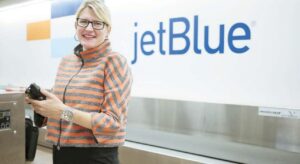

One thought on “Lost Money, Travel Missing Out On Lesbian Travelers”
Comments are closed.